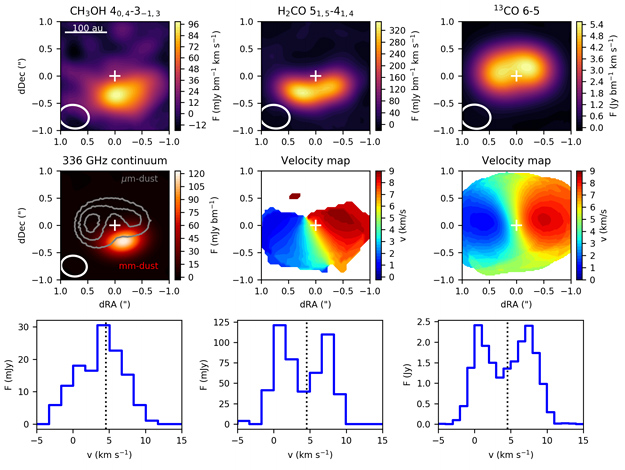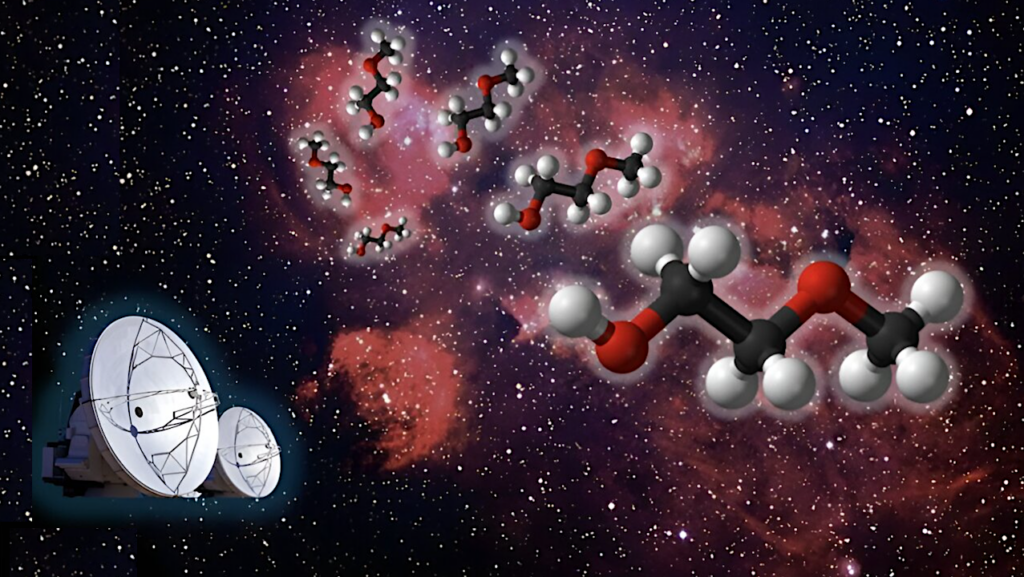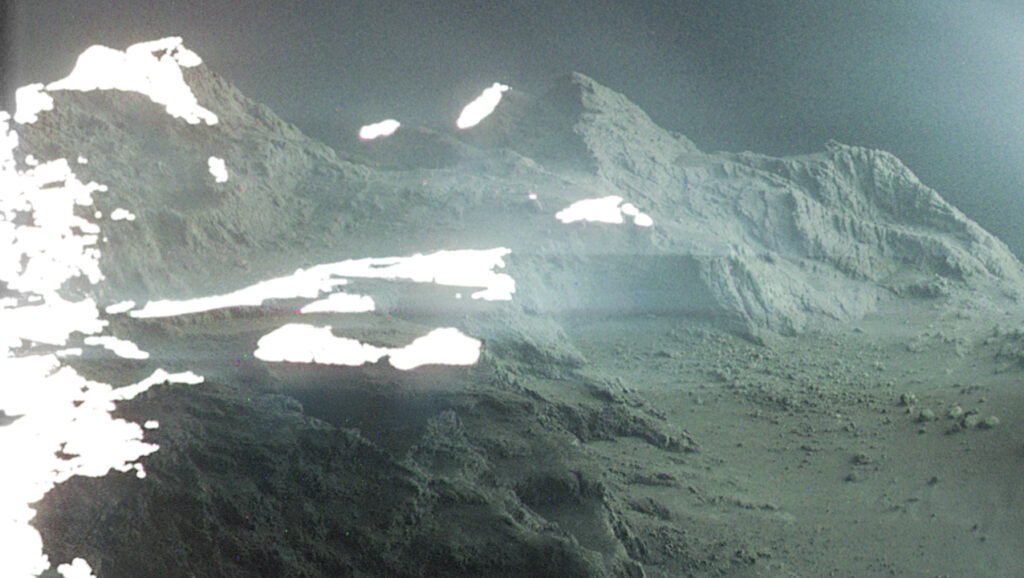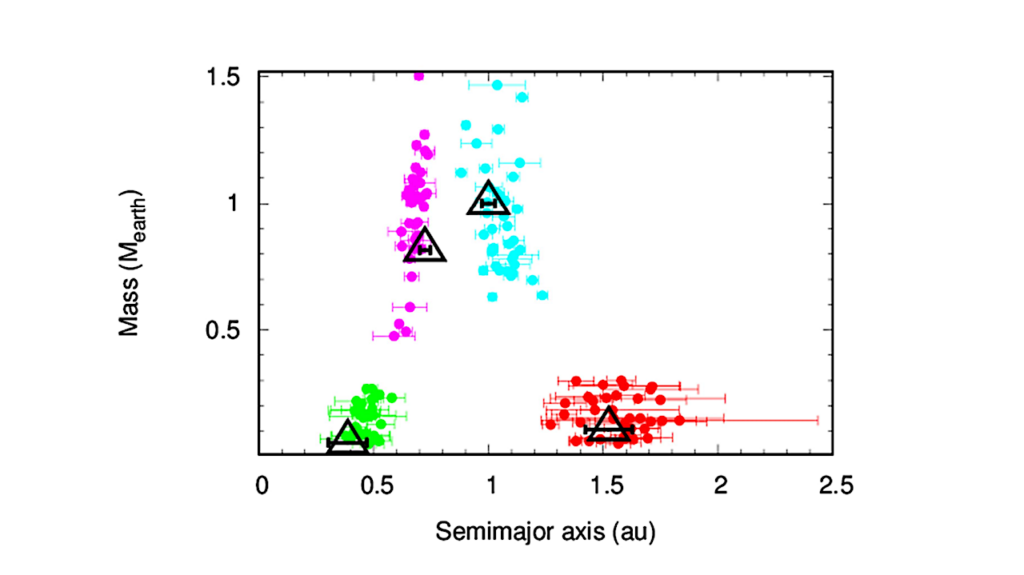A Major Asymmetric Ice Trap In A Planet-forming Disk: I. Formaldehyde and Methanol

The chemistry of planet-forming disks sets the exoplanet atmosphere composition and the prebiotic molecular content. Dust traps are of particular importance as pebble growth and transport are crucial for setting the chemistry where giant planets are forming.
The asymmetric Oph IRS 48 dust trap located at 60 au radius provides a unique laboratory for studying chemistry in pebble-concentrated environments in warm Herbig disks with low gas-to-dust ratios down to 0.01. We use deep ALMA Band 7 line observations to search the IRS 48 disk for H2CO and CH3OH line emission, the first steps of complex organic chemistry. We report the detection of 7 H2CO and 6 CH3OH lines with energy levels between 17 and 260 K. The line emission shows a crescent morphology, similar to the dust continuum, suggesting that the icy pebbles play an important role in the delivery of these molecules.
Rotational diagrams and line ratios indicate that both molecules originate from warm molecular regions in the disk with temperatures >100 K and column densities ∼1014 cm−2 or a fractional abundance of ∼10−8. Based on arguments from a physical-chemical model with low gas-to-dust ratios, we propose a scenario where the dust trap provides a huge icy grain reservoir in the disk midplane or an `ice trap’, which can result in high gas-phase abundances of warm COMs through efficient vertical mixing.
This is the first time that complex organic molecules have been clearly linked to the presence of a dust trap. These results demonstrate the importance of including dust evolution and vertical transport in chemical disk models, as icy dust concentrations provide important reservoirs for complex organic chemistry in disks.
N. van der Marel (1), A.S. Booth (2), M. Leemker (2), E.F. van Dishoeck (2,3), S. Ohashi (4) ((1) University of Victoria, Canada, (2) Leiden Observatory, the Netherlands, (3) Max Planck Institut fur Extraterrestrische Physik, Germany, (4) RIKEN Cluster for Pioneering Research, Japan)
Comments: subm. to A&A Letters
Subjects: Earth and Planetary Astrophysics (astro-ph.EP)
Cite as: arXiv:2104.08906 [astro-ph.EP] (or arXiv:2104.08906v1 [astro-ph.EP] for this version)
Submission history
From: Nienke van der Marel
[v1] Sun, 18 Apr 2021 16:49:20 UTC (2,721 KB)
https://arxiv.org/abs/2104.08906
Astrobiology, Astrochemistry,








